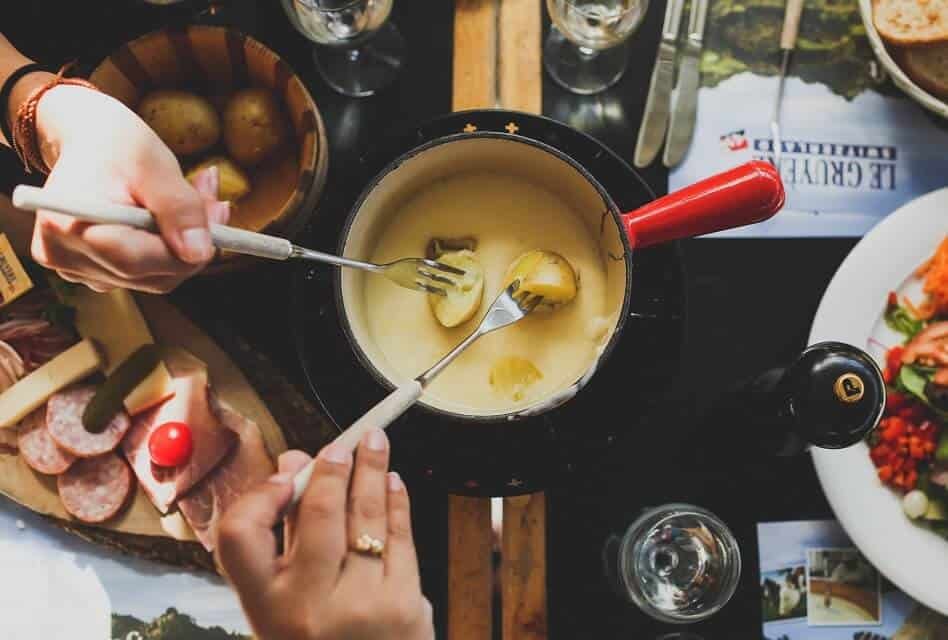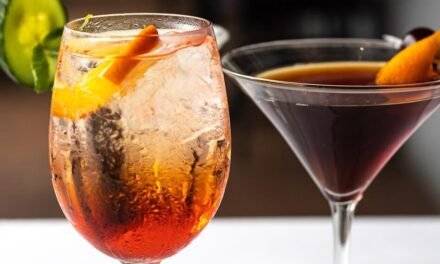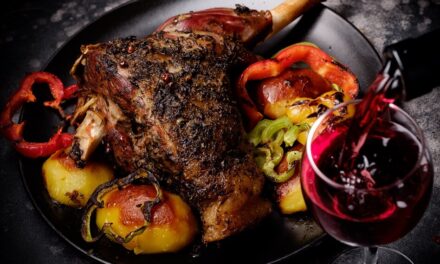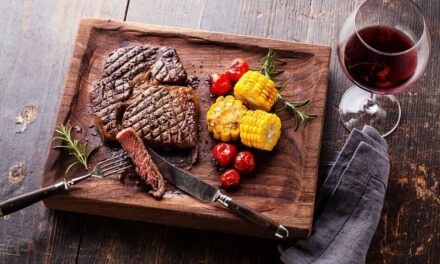Switzerland is famous not only for its beautiful landscapes and its picturesque towns but also for some food items. Especially Swiss cheese and chocolate are world-famous. But do you actually know a typical Swiss main dish? If not, this article is for you. It will discuss the best Swiss food and wine pairings.
The best wine to pair with Swiss food is a medium- to full-bodied white wine with a good level of acidity. Chardonnay or Cabernet Sauvignon wines that spent some time aging in oak barrels are just perfect.
Depending on the dish and recipe, other wines might be good pairings as well. To better understand Swiss food and wine pairings, let us discuss some examples:
- Swiss Fondue and Wine
- Raclette and Wine
- Zürcher Geschnetzeltes and Wine
- Älplermagronen and Wine
- Rösti and Wine
- Polenta and Braised Beef and Wine
- Tartiflette and Wine
- Papet Vaudois and Wine
But first, let us talk about some general characteristics of Swiss dishes.
Which Wine and Swiss Food Pairings Work Best?
Many dishes from Switzerland feature the country’s most famous ingredient: cheese. Typically, it is used to scallop the other ingredients which might be meat, potatoes, pasta, or vegetables.
But even when made without cheese, Swiss meals tend to be hearty and savory. To match these dishes, you need a wine with a decent body and good acidity. Whites are usually the better matches, but lighter reds can work as well.
With these general recommendations in mind, let us get into specific Swiss food and wine pairings.
Fondue and Wine
Cheese Fondue might be the most famous of all Swiss dishes. It is a typical meal for large groups, that not only the Swiss but also the Germans and Austrians like to serve at parties or family gatherings. As the name suggests, the main ingredient is melted cheese, or more precisely cheeses, because chefs usually combine two or more types for fondue. The most common types are Gruyère and Emmental. Both are local variations of hard cheese. The chef mixes the melted cheese with dry white wine, garlic, and Kirschwasser, a strong cherry-flavored spirit. Finally, salt, pepper, and nutmeg round up the flavor profile.
The Fondue is then served in a big pot called “caquelon” and eaten by dipping bread crumbs into the cheese. The combination of the crunchy bread and the creamy cheese makes a unique, flavorful dining experience.
The best wine pairing for Swiss cheese Fondue is a dry white wine. It needs a significant level of acidity to cut through the creamy cheese, so go for a Sauvignon Blanc or a Chardonnay. Look out for wines from Neuchatel or Geneva or, if not available, from France. Unoaked wines are better than oaked wines, which might be too powerful.
Henri Bourgeois Sancerre Jadis 2019
- type: white, still
- origin: France, Loire Valley
- varietal: Sauvignon Blanc
- alcohol: 14.5%
Jean Claude Chatelain Expression Terroirs Sancerre 2019
- type: white, still, Vintage
- origin: France, Loire Valley
- varietal: Sauvignon Blanc
- alcohol: 12.5%
Vincent Gaudry Sancerre Melodie de Vieilles Vignes 2020
- type: white, still
- origin: France, Loire Valley
- varietal: Sauvignon Blanc
- alcohol: 13.5%
- type: white, still, Vintage
- origin: France, Loire Valley
- varietal: Sauvignon Blanc
- alcohol: 13.0%
Domaine Paul Buisse Touraine Sauvignon 2020
- type: white, still, Vintage
- origin: France, Loire Valley
- varietal: Sauvignon Blanc
- alcohol: 13.5%
Alphonse Mellot La Moussiere Sancerre Blanc 2020
- type: white, still, Vintage
- origin: France, Loire Valley
- varietal: Sauvignon Blanc
- alcohol: 13.0%
Henri Bourgeois Sancerre Jadis 2019
- type: white, still
- origin: France, Loire Valley
- varietal: Sauvignon Blanc
- alcohol: 14.5%
Jean Claude Chatelain Expression Terroirs Sancerre 2019
- type: white, still, Vintage
- origin: France, Loire Valley
- varietal: Sauvignon Blanc
- alcohol: 12.5%
Vincent Gaudry Sancerre Melodie de Vieilles Vignes 2020
- type: white, still
- origin: France, Loire Valley
- varietal: Sauvignon Blanc
- alcohol: 13.5%
Alternatively, go for a German Riesling. Make sure, not to confuse these wines with the sweet Spätlese wines that are made from the same grape variety.
Rebholz Von Rotliegenden Riesling Trocken 2020
- type: white, still, Vintage
- origin: Germany, Pfalz
- varietal: Riesling
- alcohol: 12.0%
Burklin-Wolf Pfalz Estate Riesling Trocken 2020
- type: white, still, Vintage
- origin: Germany, Pfalz
- varietal: Riesling
- alcohol: 12.0%
Von Winning Deidesheimer Paradiesgarten Riesling Erste Lage Trocken 2020
- type: white, still, Vintage
- origin: Germany, Pfalz
- varietal: Riesling
- alcohol: 12.0%
Rebholz Von Rotliegenden Riesling Trocken 2020
- type: white, still, Vintage
- origin: Pfalz, Germany
- varietal: Riesling
- alcohol: 12.0%
Burklin-Wolf Pfalz Estate Riesling Trocken 2020
- type: white, still, Vintage
- origin: Pfalz, Germany
- varietal: Riesling
- alcohol: 12.0%
Von Winning Deidesheimer Paradiesgarten Riesling Erste Lage Trocken 2020
- type: white, still, Vintage
- origin: Pfalz, Germany
- varietal: Riesling
- alcohol: 12.0%
If you prefer red wine, pick a light one with fruity flavors and good acidity. A French Pinot Noir is a good choice.
Raclette and Wine
Another traditional party dish from Switzerland is Raclette. Again, the main ingredient is cheese, usually a type with the same name: Raclette. The cheese is heated, scraped onto a plate, and eaten with boiled potatoes, onions, and pickles. While this is all a traditional raclette requires, meat lovers might add sausages or roasted beef or chicken.
Just like Fondue, Raclette calls for an acidic white wine. Unoaked Chardonnay and Sauvignon Blanc are the right picks.
Red wine lovers can go for a Gamay from France. These medium-tannin, fruity wines are great complements for Raclette.
Duboeuf Julienas Chateau des Capitans 2020
- type: red, still, Vintage
- origin: France, Burgundy
- varietal: Gamay
- alcohol: 13.0%
- type: red, still, Vintage
- origin: France, Burgundy
- varietal: Gamay
- alcohol: 13.0%
Jean-Paul et Charly Thevenet Morgon Vieilles Vignes 2021
- type: red, still, Vintage
- origin: France, Burgundy
- varietal: Gamay
- alcohol: 12.5%

Swiss Raclette
Zürcher Geschnetzeltes and Wine
Named after the country’s biggest city Zurich, Zürcher Geschnetzeltes is another popular Swiss dish. Its main ingredient is veal that is sliced and sautéed with onions, mushrooms, cream, and a shot of white wine. Typically, the meat comes with a side dish such as pasta or Rösti (we will talk about Rösti later in this article). The final meal is savory and creamy and full of rich flavors.
To meet this flavor profile, you need a white wine with good acidity. It should not be too light, otherwise, the creamy sauce might overpower the wine’s aromas. Go for a Chardonnay. Wines from Graubünden in the Eastern part of Switzerland are excellent pairings. Alternatively, choose a white Burgundy from France which is made from the same grape. This wine’s complexity is just perfect to complement the delicious meal.
Joseph Drouhin Macon Villages 2019
- type: white, still, Vintage
- origin: Burgundy, France
- varietal: Chardonnay
- alcohol: 13.0%
Bouchard Pere & Fils Meursault (Domaine) 2017
- type: white, still, Vintage
- origin: Burgundy, France
- varietal: Chardonnay
- alcohol: 13.5%
Domaine Leflaive Puligny-Montrachet Les Pucelles Premier Cru 2018
- type: white, still, Vintage
- origin: Burgundy, France
- varietal: Chardonnay
- alcohol: 13.0%
Älplermagronen and Wine
Älplermagronen is the Swiss version of Macaroni and Cheese. Hence, it is also known as Alpine macaroni. In contrast to the original dish, Swiss chefs use more ingredients though. In addition to pasta and cheese, they use onions and potatoes, and, in some cases, small bacon bits. They bake all ingredients together in a casserole, creating a hearty and creamy dish that is a perfect fit for a cold winter evening.
To complement the rich and savory flavors of Älplermagronen, a medium- to full-bodied white wine is the right choice. Try to get your hands on a Swiss Chasselas (also known as Fendant). Its acidity is just right to cut through the creamy cheese, without overpowering the meal. Alternatively, go for a Chardonnay or a Sauvignon Blanc.
As a red wine lover, go for Pinot Noir. Swiss wines are great choices, but those from Switzerland’s neighbor Austria can also do the job. Be aware that those wines might go by Blauburgunder or Blaufränkisch.
Rösti and Wine
We have already mentioned Rösti earlier in this article. It is a dish made of grated and fried potatoes that typically comes as a side dish. Its crispy outside texture is an interesting counterpart to the rather soft and fluffy inside, and only mildly seasoned with salt and pepper. Regional variations might also include onions and bacon.
When served as a side dish for meat, you should choose the wine pairing based on the meat and sauce. If Rösti is the main dish itself, the best choice is a light- to medium-bodied red wine such as Merlot or Pinot Noir. Their red fruit flavors are an excellent add-on to the crispy potato dish. Make sure to stick with Old World wines from cooler climates.
Joseph Drouhin Laforet Pinot Noir 2019
- type: red, still, Vintage
- origin: France, Burgundy
- varietal: Pinot Noir
- alcohol: 12.5%
Remoissenet Beaune Teurons Premier Cru 2019
- type: red, still, Vintage
- origin: France, Burgundy
- varietal: Pinot Noir
- alcohol: 14.0%
Domaine Comte Georges de Vogue Bonnes-Mares Grand Cru 2018
- type: red, still, Vintage
- origin: France, Burgundy
- varietal: Pinot Noir
- alcohol: 13.0%
Polenta and Braised Beef and Wine
Another common side dish in Switzerland is Polenta. Its look might remind you of mashed potatoes at first, but it is actually made from boiled cornmeal. Most commonly, Polenta is served as a side dish with braised beef, creating a hearty and flavorful meal.
Red wine is the right choice when searching for wine pairings for Polenta and braised beef. It definitely needs a good body and some tannins to match the rich meal, though.
You cannot go wrong with a red Bordeaux. Choose one from the left bank, with Cabernet Sauvignon as the dominant grape. Its aromas of black fruit and herbs are a fantastic match for the hearty dish.
A similarly powerful wine that matches Polenta and braised beef is Barolo, which is one of Italy’s most prestigious wines.
- type: red, still, Vintage
- origin: France, Bordeaux (left bank)
- varietal: Cabernet Franc, Cabernet Sauvignon, Merlot, Petit Verdot
- alcohol: 13.5%
- type: red, still, Vintage
- origin: France, Bordeaux (left bank)
- varietal: Cabernet Franc, Cabernet Sauvignon, Merlot, Petit Verdot
- alcohol: 14.0%
- type: red, still, Vintage
- origin: France, Bordeaux (left bank)
- varietal: Cabernet Sauvignon, Merlot
- alcohol: 13.0%
Paolo Conterno Barolo Ginestra 2016
- type: red, still, Vintage
- origin: Italy, Piedmont
- varietal: Nebbiolo
- alcohol: 15.5%
Marchesi di Barolo Barolo Sarmassa 2014
- type: red, still, Vintage
- origin: Italy, Piedmont
- varietal: Nebbiolo
- alcohol: 14.5%
Cordero di Montezemolo Barolo Enrico VI 2015
- type: red, still, Vintage
- origin: Italy, Piedmont
- varietal: Nebbiolo
- alcohol: 15.0%
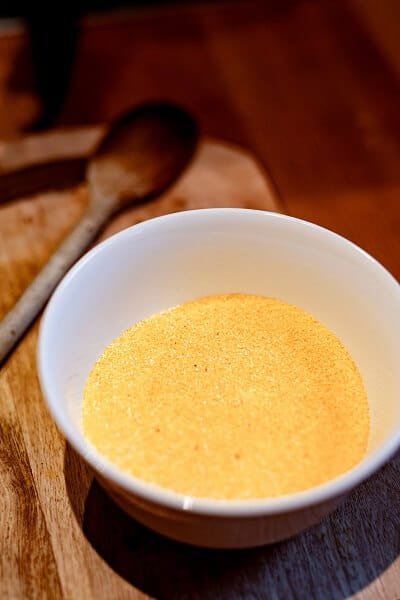
Raw Polenta
Tartiflette and Wine
Next, let us discuss Tartiflette. This dish comes from the French part of the Swiss Alpes but is not that different from the German-swiss meals we have already discussed. Just like Älplermagronen, it is baked in a casserole. Its main ingredients are potatoes, bacon, onions, and cheese. The ladder makes the dish special because local chefs use Reblochon, a soft washed-rind and smear-ripened cheese. It comes from the region of Haute-Savoie, a region in the French Alpes, bordering both Switzerland and Italy. Be aware that Reblochon is unavailable in the United States because of import restrictions. If you want to cook Tariflette, search for Delice du Jura or Raclette instead.
Again, the right wine pairing is a white wine, preferably a regional pairing. In this case, the wines from the Savoie region, made from Jacquère or Roussette, are perfect. They feature a crisp acidity to cut through the cheese and aromas of green and citrus fruits as well as mineral notes.
Domaine Saint-Romain Jacquere Blanc 2020
- type: white, still, Vintage
- origin: France, Savoie
- varietal: Jacquère
- alcohol: 11.5 %
Domaine Jean-Francois Quenard Chignin 2021
- type: white, still, Vintage
- origin: France, Savoie
- varietal: Jacquère
- alcohol: 11.5 %
Domaine des Ardoisieres Cuvee Silice Blanc 2021
- type: white, still, Vintage
- origin: France, Savoie
- varietal: Jacquère
- alcohol: 11.5 %
In case, you prefer reds, choose a Pinot Noir from the same region. With its good balance, featuring red fruit aromas and earthy notes, it adds superbly to the meal. A more powerful alternative is French Syrah. It comes with flavors of black fruits and peppers. Together with its notable tannins, these aromas are a fantastic match for Tartiflette.
Jean-Louis Chave Selection Saint-Joseph Offerus 2018
- type: red, still, Vintage
- origin: France, Rhône Valley
- varietal: Syrah
- alcohol: 13.5%
Jaboulet Crozes Hermitage Domaine de Thalabert 2019
- type: red, still, Vintage
- origin: France, Rhône Valley
- varietal: Syrah
- alcohol: 15.0%
M. Chapoutier Ermitage Le Pavillon 2006
- type: red, still, Vintage
- origin: France, Rhône Valley
- varietal: Syrah
- alcohol: 13.0%
Papet Vaudois and Wine
Last but not least, there is another hearty dish from Western Switzerland that you should try: Papet Vaudois. This traditional meal from the Vaud region is made from potatoes, leeks, onions, and smoked pork sausages. The ingredients are simmered in a mix of chicken stock and white and seasoned with pepper, salt, nutmeg, and heavy cream.
The meal’s richness calls for a bold white wine such as the formerly mentioned white Burgundy or a Swiss Chardonnay. Slightly oaked wines are perfect as they have just the right body and complexity to match the meal.
Red wine lovers can pick the same wines that go with Tartiflette: Pinot Noir or Syrah from the Savoie region in France.
Final Words
Switzerland does not have the same culinary reputation as its neighbors Italy or France. That is a shame because the meals from the small alpine country that we have just discussed are absolutely worth trying. And with the matching wines, you can create fantastic Swiss food and wine pairings that will make you stand out as a dinner party host. So, as the locals say: En Guete mitenand!

